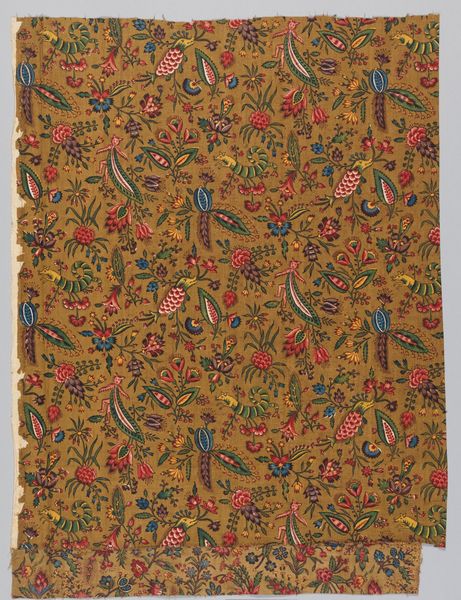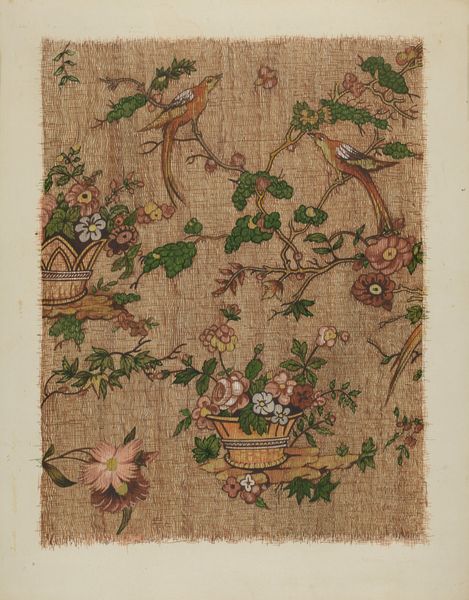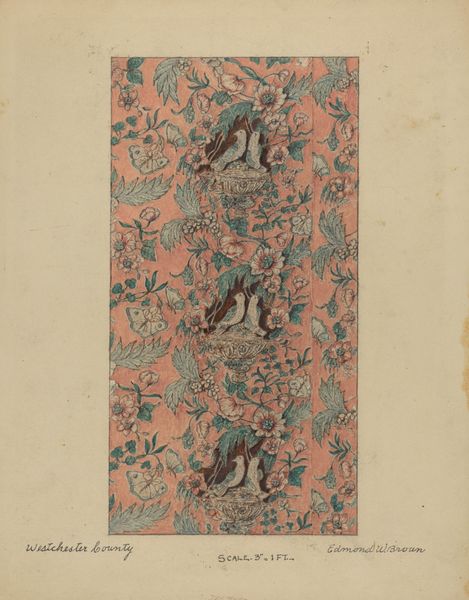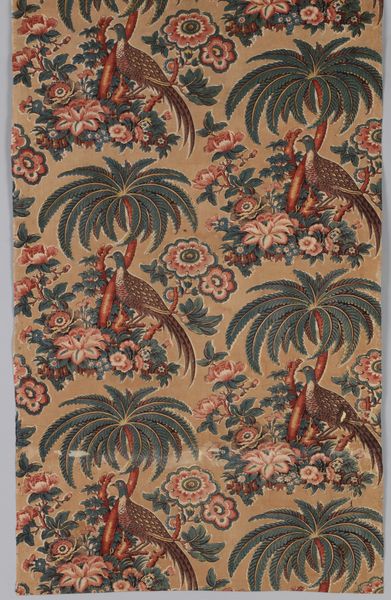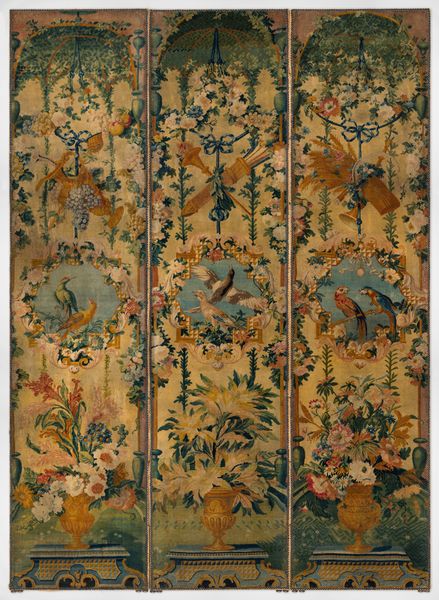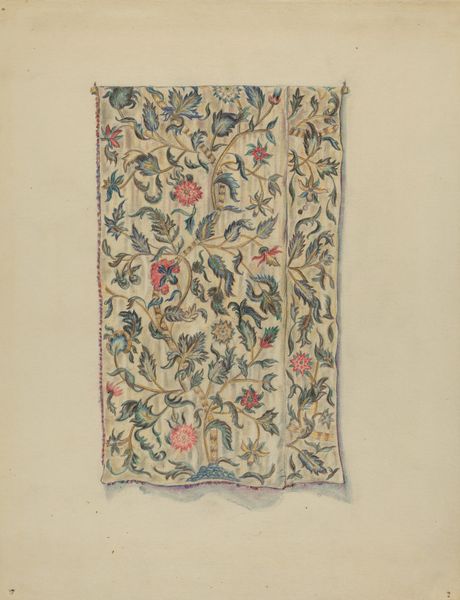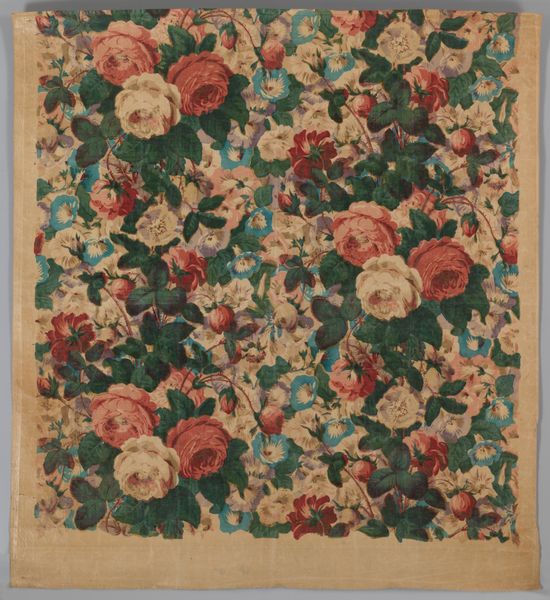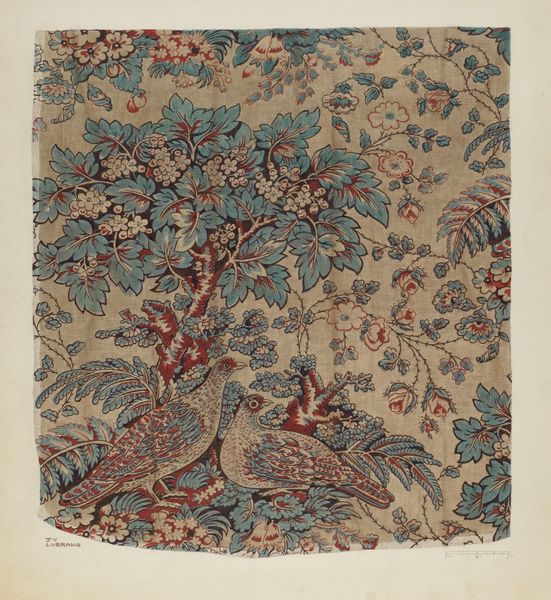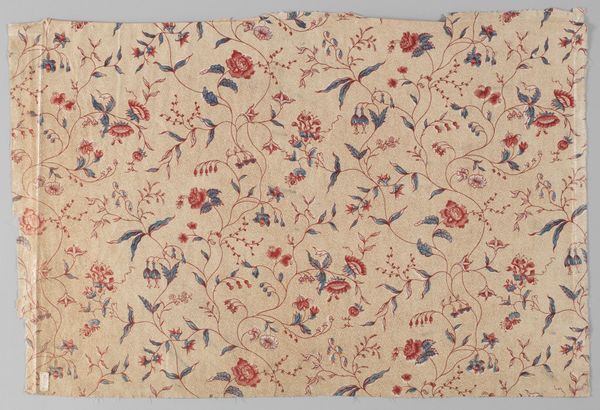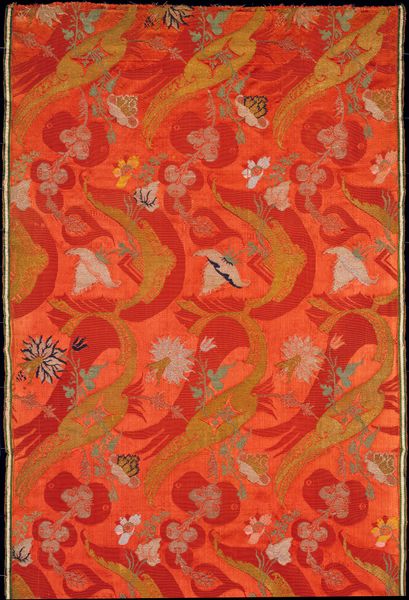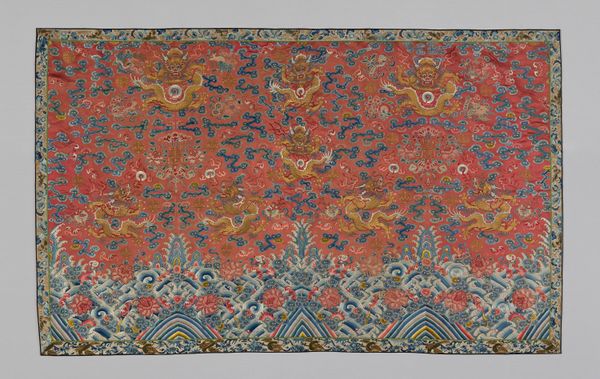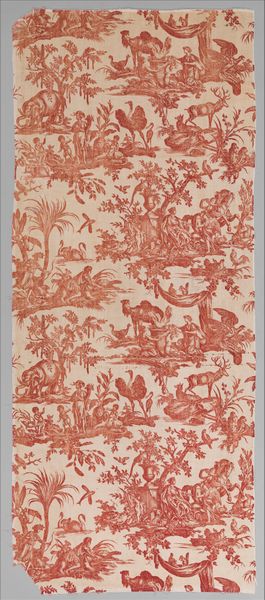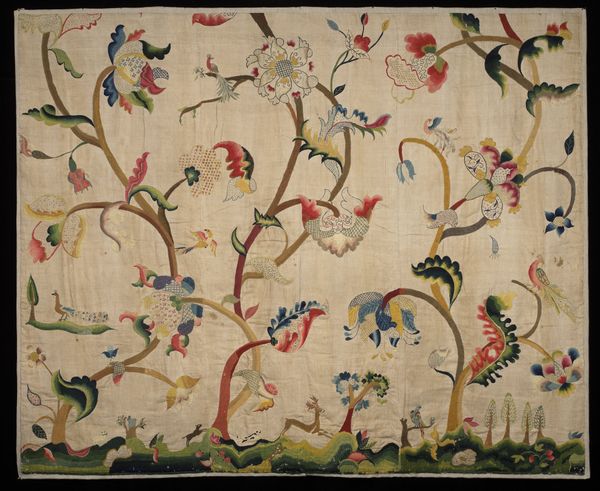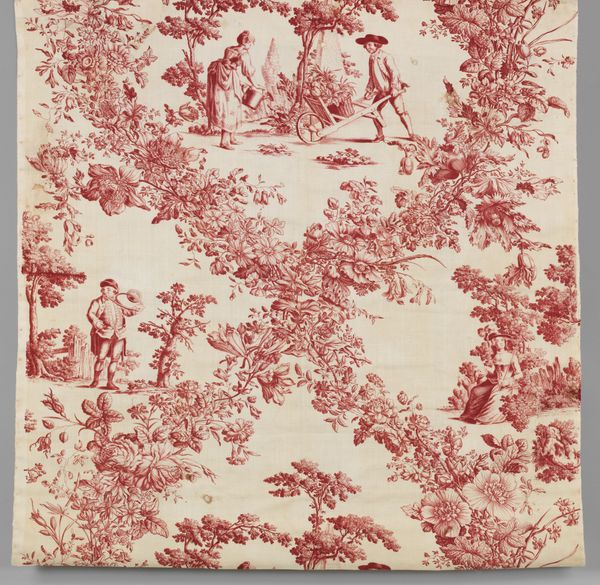
Plum Trees and Pheasants (Furnishing Fabric) c. 1830 - 1840
0:00
0:00
fibre-art, print, textile
#
fibre-art
#
naturalistic pattern
# print
#
textile
#
geometric pattern
#
organic pattern
#
orientalism
#
decorative-art
Dimensions: a: 91.5 × 160.1 cm (36 × 63 in.) b: 75.6 × 151.2 cm (29 3/4 × 59 1/2 in.) c: 78.8 × 180.4 cm (31 × 71 in.) d: 91.5 × 160.1 cm (36 × 63 in.) e: 76.2 × 151.8 cm (20 × 59 3/4 in.) f: 78.8 × 184.2 cm (31 × 72 1/2 in.)
Copyright: Public Domain
This furnishing fabric, "Plum Trees and Pheasants," was made in the nineteenth century by Bannister Hall. It exemplifies the era's fascination with nature, interpreted through sophisticated manufacturing processes. The fabric is likely cotton, chosen for its affordability and suitability for printing. The pattern was achieved through roller printing, a mechanized technique that allowed for mass production of textiles. This contrasts with earlier, more laborious methods like block printing, where each color was applied individually by hand. Look closely, and you can see the tell-tale signs of this industrial process; the slight misalignments and repetitions inherent in machine-made patterns. The choice of subject matter, pheasants amidst plum trees, reflects a romanticized view of the countryside, appealing to an increasingly urban consumer base. But the fabric itself speaks to the realities of industrial labor and global trade networks that underpinned this aesthetic. By considering its materials, making and context, we can understand the complex social and economic forces at play in its creation.
Comments
No comments
Be the first to comment and join the conversation on the ultimate creative platform.
